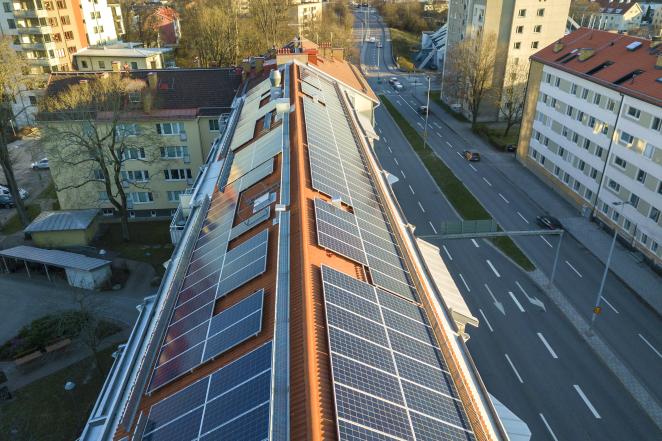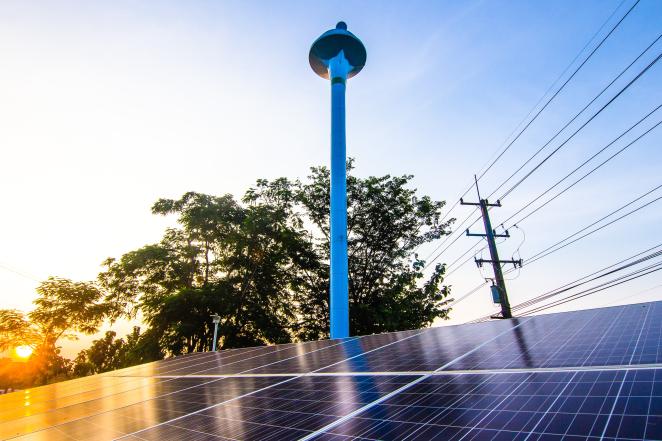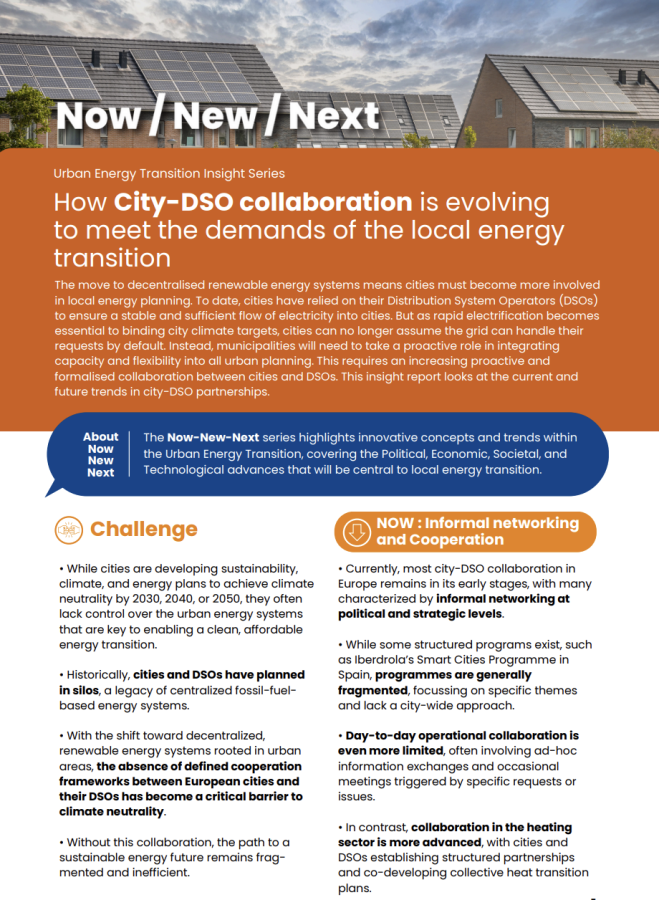In this first edition of the Now-New-Next series, we report looks at the current and future trends in city-DSO partnerships, drawing from examples from the COPPER project. The Now-New-Next series highlights innovative concepts and trends within the Urban Energy Transition, covering the Political, Economic, Societal, and Technological advances that will be central to local energy transition.

From passive to proactive DSO-city relationships
The move to decentralised renewable energy systems means cities must become more involved in local energy planning. To date, cities have relied on their Distribution System Operators (DSOs) to ensure a stable and sufficient flow of electricity into cities.
But as rapid electrification becomes essential to binding city climate targets, cities can no longer assume the grid can handle their requests by default. Instead, municipalities will need to take a proactive role in integrating capacity and flexibility into all urban planning. This requires an increasing proactive and formalised collaboration between cities and DSOs.

What’s Now, New and Next for City-DSO collaboration?
NOW: City-DSO collaboration is in its early stages and characterized by informal networking.
NEW: Cities are demanding more detailed and location-specific grid data and stronger commitments from their DSOs, leading to formalized joint initiatives.
NEXT: The next phase will see city-DSO collaboration evolve into fully integrated partnerships centered on joint investment programs and anchored by a comprehensive Local Energy Action Plan (LEAP).

Read the full insight
Read the full insight report, which includes case studies from the cities of Varberg and Fredericia.
